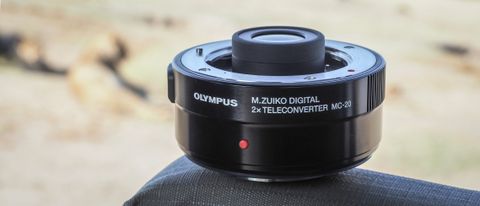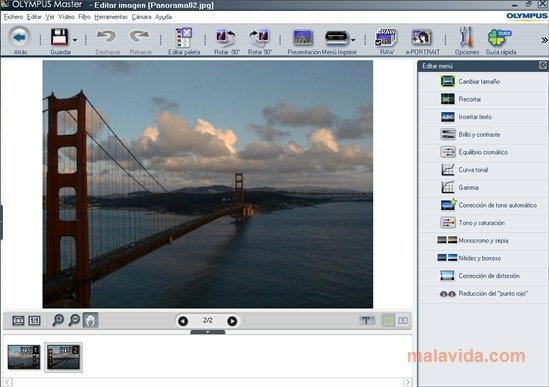

Two other, special-use gradation settings are available on the camera, Low Key and High Key.

It is worth noting that even when gradation is set to Normal, the E-520 applies a much more sensible default tone curve to the JPEGs than the E-510.

Below you can see a comparison of Normal and Auto gradation the difference is noticeable in the shadowed areas on the left side of the photo, and also in the tree foliage. Although this option is always at your disposal, remember that it is meant to be used in strong, contrasty lighting at base ISO. The way to engage SAT is to set the tonal gradation to Auto via the Super Control Panel. Similarly to Nikon's D-lighting, Sony's DRO etc., this solution brightens the shadows in a high-contrast scene without affecting the midtones or the highlights.

One of the improvements over the E-510 is the inclusion of Shadow Adjustment Technology (SAT), a useful feature for JPEG shooters. Here are some 100% crops which show the noise The only practical difference between low- and high-ISO shots is that the former lend themselves better to tweaks like levels-, curves- or colour balance adjustments in post-processing.
Olympus master 2 review iso#
Therefore I would say that unless you are shooting double-page spreads for the highest-quality glossy magazines or coffee table books, you can safely use whatever ISO speed you deem appropriate in the given shooting conditions. I had a commercial lab print one of the ISO 1600 shots on A4 size Kodak Royal Digital matte paper and couldn't see a trace of noise, even though I knew where to look for it. By scrutinising the images at 100% magnification on screen, it's not terribly difficult to see evidence of shadow noise at medium to high ISOs, but it is tightly packed and finely grained, so it does not really appear in print. The best choice seems to be Low, and this is the setting the test shots whose crops you see below were taken at. You may also set it to Low, Standard or High. Like its predecessor – but unlike most of the competition – the E-520 lets you turn the in-camera noise filtering completely off. The Olympus E-520 has five selectable sensitivity settings, ranging from ISO 100 to 1600. At any rate, this is a minor issue that is unlikely to affect the majority of photographs taken with the E-520. This is about the only complaint I have about the E-520's image quality, and to be fair, I did not see anything like that in any of the RAW shots, so it might simply be a rare JPEG processing bug that has nothing to do with the AA filter. Sometimes it failed to prevent false detail or moiré pattern from appearing in photos taken with a lens that can clearly out-resolve the sensor, as can be seen near the upper right corner of the photo of the Irish pub in the Sample Images section. There has been speculation about the E-520 having an overly strong anti-alias filter, but while it may indeed have one that's somewhat stronger than its predecessor's, I have actually found indications that it may still be a bit too weak. Photos taken in visible light show excellent detail across the camera's entire sensitivity range, with high-ISO noise being largely unobtrusive, making the Olympus E-520 an ideal tool for those who like big, detailed prints. The camera has also been proven to be fairly sensitive to infrared light, and its Live View Boost feature is a real boon to photographers wishing to compose and focus with an IR filter attached to the lens. The sensor turned out to have a more than respectable dynamic range, although you will have to look beyond Olympus' own RAW development tools to get the maximum out of it. The newly implemented Shadow Adjustment Technology really helped when shooting JPEG in harsh, uncontrolled lighting. Colours were rich and vibrant without looking over-saturated, and the photographs had very good tonality. The JPEG output of its predecessor the E-510 may have suffered from an over-contrasty default tone curve, but the E-520 in the Natural Picture Mode yielded very good results right out of the camera. All of the sample images in this Review were captured using the 10 megapixel Large Super Fine JPEG setting, producing a file thatĭuring the review, the Olympus E-520 produced photos of excellent quality.


 0 kommentar(er)
0 kommentar(er)
